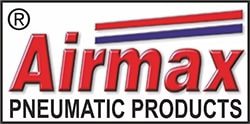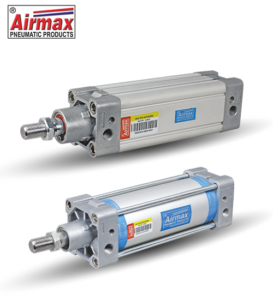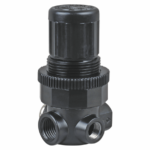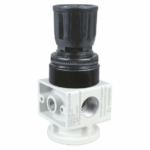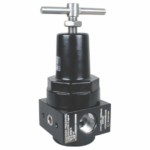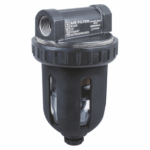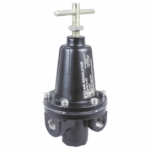Different Types of Pneumatic Valves and Their Applications Use
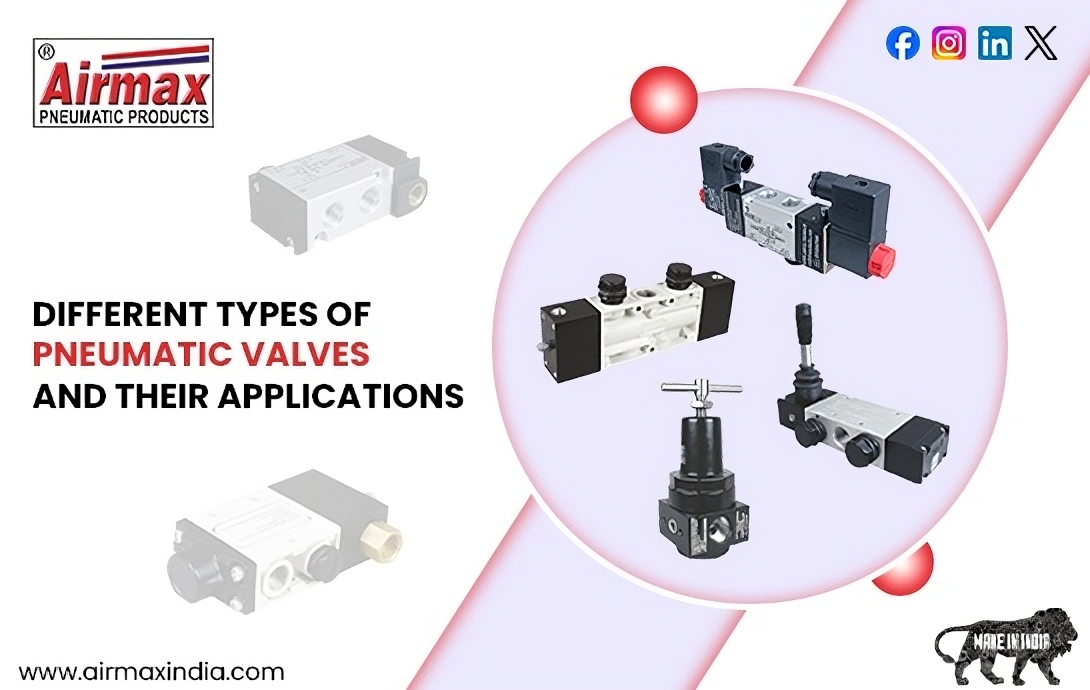
A pneumatic valve, often known as a directional control valve, has one major function: to alter airflow. These valves can keep the pressure consistent. There are various pneumatic valve classifications and a diverse range of pneumatic valves. Pneumatic valves are classified according to style, kind, design concept, operating mode, function, size, and application.
The pneumatic valve can switch on and off a single flow route and exact proportional pressure and flow control. Most pneumatic valves include a control function, which may be described as the valve’s action in any process or the regulation of a quantity. A control function requires control energy, which is defined by actuation (manual, mechanical, or pneumatic).
Firstly, we discuss about pneumatic cylinder, which has a crucial role in a pneumatic system.
Role of Pneumatic Cylinders in Pneumatic Valve Systems
A pneumatic cylinder is an essential component that works in conjunction with pneumatic valves to execute mechanical movement using compressed air. These cylinders convert the energy from compressed air into linear or rotary motion, driving machinery and automation systems efficiently.
The selection of the right pneumatic valve directly impacts the performance of the pneumatic cylinder, ensuring smooth operation and precise control over force and speed.
For example, in an industrial setting, directional control valves regulate the air supply to single-acting or double-acting pneumatic cylinders, enabling controlled extension and retraction movements crucial for automated processes.
Pneumatic Valve Types:
Pneumatic Valves, also known as directional control valves, can be configured in a variety of ways, including:
- By the number of flow ways or switching positions that are possible
- By the number of inlet and outlet ports they have
- The mechanism used to open or close the ports
- By the status of the valve when it is not actuated
Functional directional control valves, which control the direction of airflow or prevent it entirely, are a large class of pneumatic valves with numerous variants.
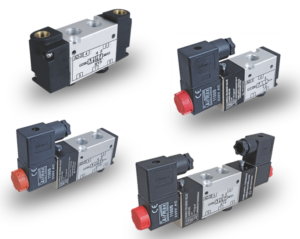
These devices can be used in a hydraulic system to connect or disconnect the system’s main compressed air supply or to advance or retract air cylinders that move as part of the machine or process for which the pneumatic system was designed.
The following are the primary types of pneumatic valves:
- 3/2 way pneumatic directional control [single solenoid]
- 5/2 way pneumatic directional control valve [single solenoid]
- 5/3 way double solenoid directional control valve
- Pneumatic Spring Offset Valves
Two-Way, Two-Position Valves
Two ports are connected by a passage that can be opened or closed to control the flow through the valve. An electrically activated solenoid typically shifts the valve spool or poppet to direct flow. Many systems use the valve’s simple on-off function to interlock, isolate, and connect various system parts.
Three-way, Two-Position Valves
Three-way and two-way valves are made up of three ports that are connected by passages within the valve body. To control a single-acting cylinder or pilot another valve, the valves pressurize and exhaust one outlet port.
Three-way valves direct pressurized air to the cylinder’s cap-end side. Shifting the spool to the opposite extreme prevents flow and pressure from reaching the cylinder. Since the cylinder is connected to the exhaust passage, gravity or spring force must return the rod to its original position. Three-way valves can also be used in pairs to control a double-acting cylinder, effectively a four-way valve. When high cylinder speeds are required, consider using paired three-way valves instead of a four-way valve.
The close coupling of three-way valves to the cylinder ports reduces cylinder backpressure and pressure drop in the lines, allowing for higher cylinder speeds. In high cyclic applications or when intermediate positions are required, the valves are also used to save compressed air.
Four-way, Two-Position Valves
Two-position, four-way valves typically have four or five ports and two or three positions. In each position, a two-position valve has two distinct flow paths for actuating and reversing cylinders and bi-directional motors. At the same time, the spool directs flow from the pressure port, and the other cylinder port exhausts to the atmosphere.
The four-way valve in the five-port version of the two-position has five individual ports that provide various valve configurations, such as two different exhausts or pressure to Actuate the Cylinder and provide high clamping force, but lower pressure (from a regulator) to release the clamp. Lowering the pressure saves energy.
Four-way, Three-position Valves
Five-port versions of four-way, three-position valves are also available. The most common center conditions for these valves are “all ports blocked” and “exhaust center.” The two extreme positions that control Cylinder movement are the power positions of the four-port, four-way valve. The center position is intended to meet some system requirements, such as locking or letting the cylinder float.
Pneumatic Valves with Spring Offset
The way airflow direction is switched is referred to as this type of pneumatic valve classification. A two-way directional valve, for example, is either open ( airflow is enabled) or closed. A pneumatic cylinder moves a valve spool into position to allow each port to be open or closed. A spring is used to release the valve spool and return the pneumatic valve to its original position. A spring offset valve is a two-way directional valve that operates in this manner.
Advantages of Pneumatic Systems
Pneumatic systems are intended to use compressed air to both transmit and control energy. Pneumatic systems can be seen in production lines, train doors, and mechanical clamps. Many industrial companies would not be able to proceed to work without the specialization of pneumatic control systems. In many cases, pneumatics is the driving force of automated machines. Some of the benefits of using these devices include:
- Systems that operate on compressed air do not run out of air because there is an infinite amount in our atmosphere, which can be used to provide compressed air. Distance does not restrict the transporting of compressed air and can be transported through pipes easily. Compressed air does not require to be recycled or processed when discharged back into the atmosphere.
- The instruments are durable and reliable. Components of these machines, the same as pneumatic valves, are not damaged easily compared to other electromotive elements.
- These devices are safe to work. As opposed to electromotive systems, pneumatics systems are usually considered the safer of the two varieties. This is mainly because pneumatic systems are free of sparks or explosions, which indicates they can work in combustible environments.
Trust Airmax Pneumatics Ltd., we are the leading Pneumatic Valve Manufacturer in the Pneumatic industrial market, offering the best quality of Pneumatic Valves and Pneumatic Air Cylinders for the ease of your operation.
